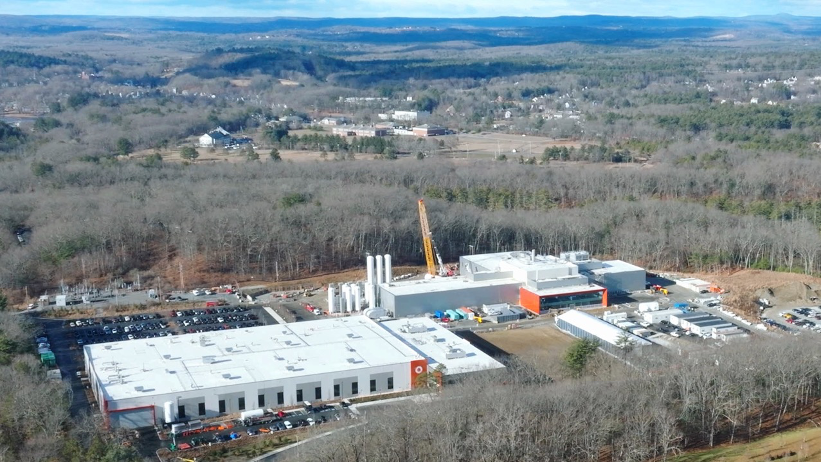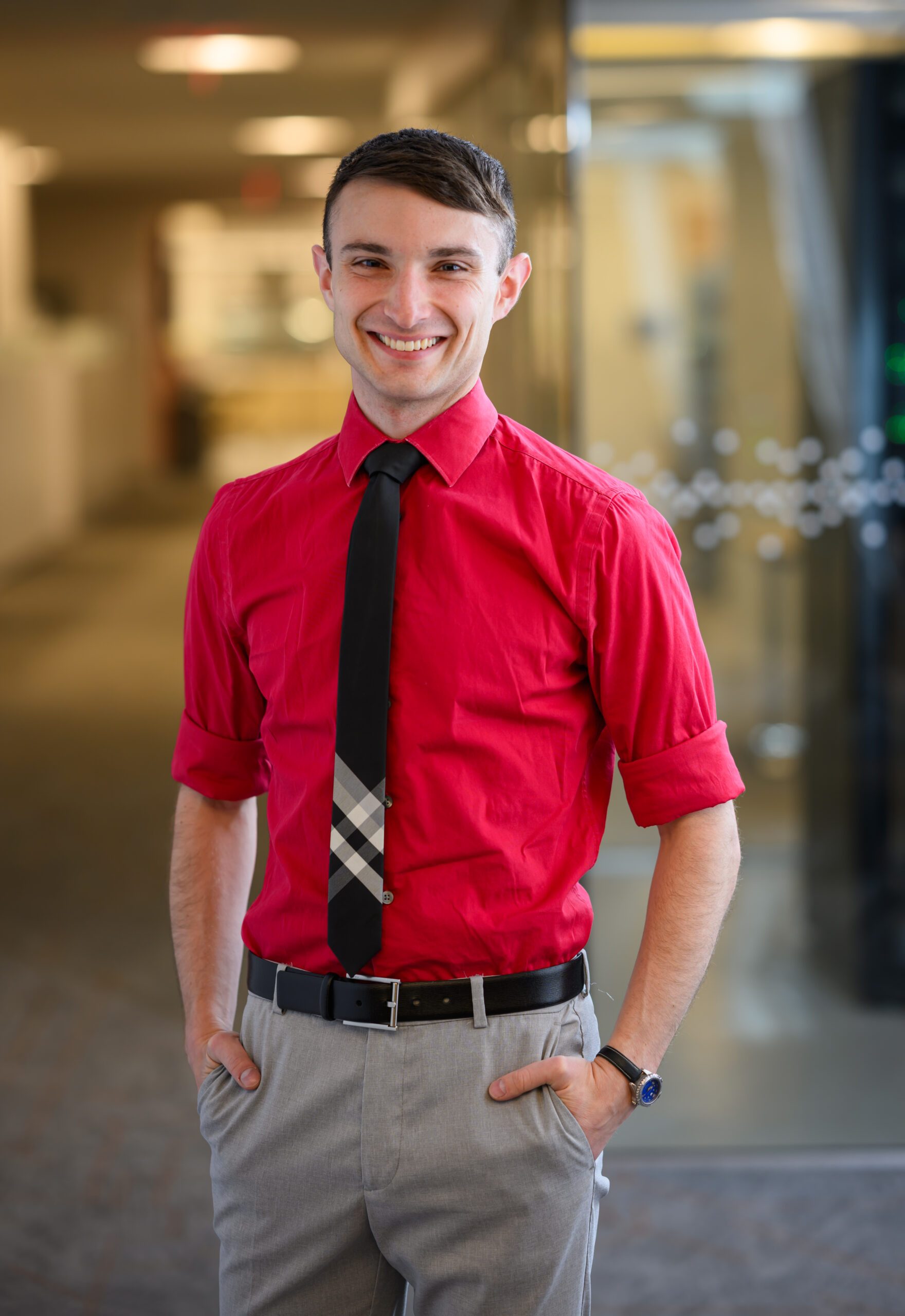Commercial Fusion Power
High Temperature Superconducting Magnets and Compact Tokamak Power Plants
Alex Creely
Director of Tokamak Operations
Chief Engineer for ARC Conceptual Design
Commonwealth Fusion Systems
About the Lecture

Fusion energy has the potential to provide large quantities of firm, clean, carbon-free energy in the near term and to continue doing so for the foreseeable future. Commonwealth Fusion Systems (“CFS”) is building on decades of fusion research from around the world, focusing on a type of fusion plant called a tokamak. Having demonstrated a new type of high field superconducting magnet in 2021, CFS is now building a high-field tokamak called SPARC, aiming to achieve net fusion energy production in 2027 in a compact, economical facility. In parallel, CFS is also in the early stages of designing a 400 MW electric fusion power plant called ARC, with a site recently announced outside of Richmond, Virginia. This talk will describe the Commonwealth Fusion Systems path to a fusion power plant, where the SPARC and ARC tokamaks sit on this path, and the broader fusion energy ecosystem.
Selected Reading & Media References
https://cfs.energy/technology/publications
About the Speaker

Alex Creely is the Chief Engineer at Commonwealth Fusion Systems (“CFS”) for the ARC conceptual design project, leading technical aspects of the design of the world’s first fusion power plant. He also leads the Tokamak Operations groups within the SPARC project, preparing the tools and team for operation of SPARC, and optimizing the path to net energy production. Alex joined CFS in 2019 with the goal of putting fusion energy on the grid quickly enough to make a difference to climate change. He was the lead author on the physics basis for the SPARC tokamak and has played a key role in building several functions within the company.
Alex’s PhD work at MIT focused on building and operating specialized instrumentation on tokamaks at both MIT and at the Max Planck Institute for Plasma Physics in Germany. This instrumentation measured small fluctuations in plasma temperature to determine how turbulence in fusion plasmas transported heat out of the tokamak. These measurements informed large simulation tools that have aided the design of both SPARC and ARC. In addition to his thesis work, Creely also led parts of early ARC design as part of a graduate student class at MIT, and he spent time working on a stellarator at the National Institute for Fusion Science in Japan.
Creely earned a Bachelor of Science and Engineering in Mechanical Engineering at Princeton University and a PhD in Applied Plasma Physics at MIT.
CV: https://alexcreely.com/
Webpage: https://alexcreely.com
LinkedIn Profile: https://www.linkedin.com/in/alex-creely
Minutes
On June 13, 2025, Members of the Society and guests joined the speaker for a reception and dinner at 5:45 PM in the Members’ Dining Room at the Cosmos Club. Thereafter they joined other attendees in the Powell Auditorium for the lecture proceedings. In the Powell Auditorium of the Cosmos Club in Washington, D.C., President Larry Millstein called the lecture portion of the 2,517th meeting of the Society to order at 8:05 p.m. ET. He began by welcoming attendees, thanking sponsors for their support, announcing new members, and inviting guests to join the society. Scott Mathews then read the minutes of the previous meeting which included the lecture by Mark Palmer, titled “The Path to an Energy Frontier Muon Collider”. The minutes were approved as read.
President Millstein then introduced the speaker for the evening, Alex Creely, of Commonwealth Fusion Systems. His lecture was titled “Commercial Fusion Power: High Temperature Superconducting Magnets and Compact Tokamak Power Plants”.
The speaker began by saying that fusion potentially provides power that is clean, firm, safe, scalable, and secure. He discussed the process of fusion: taking small atoms and combining them into larger atoms, while liberating large amounts of energy. He described DT-fusion, the most common type of hydrogen fusion. He described the nature of plasma, indicating that temperatures on the order of 100 million Kelvin are required for fusion, and that all matter exists as plasma in this temperature regime. Creely then introduced the Tokamak: a toroidal shaped plasma reactor which relies on magnetic confinement. He described how the Lorentz force causes charged particles to orbit around the magnetic field lines, thereby confining the plasma. He claimed that more than 100 Tokamaks have been built, and that while many technical questions remain, much of the physics has been worked out. He described the geometry of the magnets in a Tokamak, including: the central solenoid, the toroidal field coils, and the poloidal field coils.
The speaker then discussed the company Commonwealth Fusion Systems (or CFS): founded in 2018, spun out of MIT, raised more than $2 billion in venture capital, with a current workforce of more than 1,000 employees. He described the company’s mission as taking the relatively well understood physics of Tokamaks, combined with a fundamentally new magnet technology, to create a commercial demonstration called SPARC. The lessons learned and the technologies developed from SPARC would allow them to build a commercial powerplant called ARC. He said that ARC would be a commercially available product, operating “on the grid”. He mentioned that CFS publishes papers in peer reviewed journals regularly, and that the company supports the open dissemination of information on plasma physics. Creely mentioned the collaborations between CFS and more than 100 laboratories around the world.
The speaker then discussed magnet technology. He described how increasing the magnetic field can increase the confinement time of the plasma and also decrease the overall size of the Tokamak. He said that in 2021, CFS, in collaboration with MIT, developed a new type of high temperature superconducting magnet which produces more than 12 T at its center; approximately twice the field of the previous generation of Tokamak magnets. He said that these new magnets are now in commercial production.
Creely described the SPARC demonstration plant: designed on the same physics as ITER, but at reduced size, currently under construction just outside Boston, initially planned to be operated at Q>1 but able to achieve Q=11, producing 140 MW of fusion power. Its primary goal is to “learn for ARC”. He discussed how SPARC will be used to investigate heat exhaust solutions to be implemented on ARC. ARC will be a commercial fusion power plant, considerably smaller than ITER, producing 400 MW of net electric power, planned to be built in Virginia in the early 2030’s. Creely said that CFS intends to deploy thousands of ARC’s around the world by 2050.
The speaker discussed getting energy in and out. The energy in, to heat the plasma, is provided by radio frequency waves. The plasma-facing components are made from or coated with tungsten. The fusion-generated heat comes out through the divertor and also via neutrons. The neutrons will be absorbed in a molten salt blanket, made from the material “FLiBe”: a mixture of lithium fluoride and beryllium fluoride. The FLibe serves three functions: it absorbs the neutrons, it acts as a working fluid for the primary heat exchanger, and it breeds tritium (one of the hydrogen isotopes required for fuel).
The speaker ended his talk by saying “Fusion is the basic process that powers the Universe, and it is potentially a huge game-changer in the energy industry”.
The lecture was followed by a Question and Answer session.
A guest asked if the US was the most likely place for commercial fusion to be developed, and if the regulatory conditions played a significant role. Creely responded that CFS chose the US as the site for their first commercial plant partly because the regulatory requirements were well defined. He said that the majority of private companies pursuing commercial fusion are in the US, largely because the US offers a good talent base and a venture capital system for these types of efforts.
A member asked for specifics on the high temperature superconductor used to fabricate the magnets. Creely said that the material is Yttrium Barium Copper Oxide or YBCO, in a thin film, deposited on a metal ribbon, so that it remains flexible. He said that CFS purchases the ribbons from commercial suppliers.
A member on the live stream asked what the projected lifetime of plasma facing components would be, given that high energy neutrons are not “kind” to most materials. Creely responded that the entire plant would have a lifetime of about 20 years, but that the vacuum vessel, closest to the plasma, would be replaced every one or two years.
President Millstein asked about how the radio frequency waves are generated and coupled into the plasma. Creely said that solid-state power electronics are used to generate the RF, which is coupled into the reactor using high power coax waveguides. Inside the reactor, antenna structures launch the RF into the plasma to generate heat.
After the question and answer period, President Millstein thanked the speaker and presented him with a PSW rosette, a signed copy of the announcement of his talk, and a signed copy of Volume 17 of the PSW Bulletin. He then announced speakers of up-coming lectures and made a number of housekeeping announcements. He adjourned the 2,517th meeting of the society at 9:54 pm ET.
Temperature in Washington, DC: 25° Celsius
Weather: Mostly cloudy
Audience in the Powell auditorium: 54
Viewers on the live stream: 43
For a total of 97 viewers
Views of the video in the first two weeks: 778
Respectfully submitted, Scott Mathews: Recording Secretary